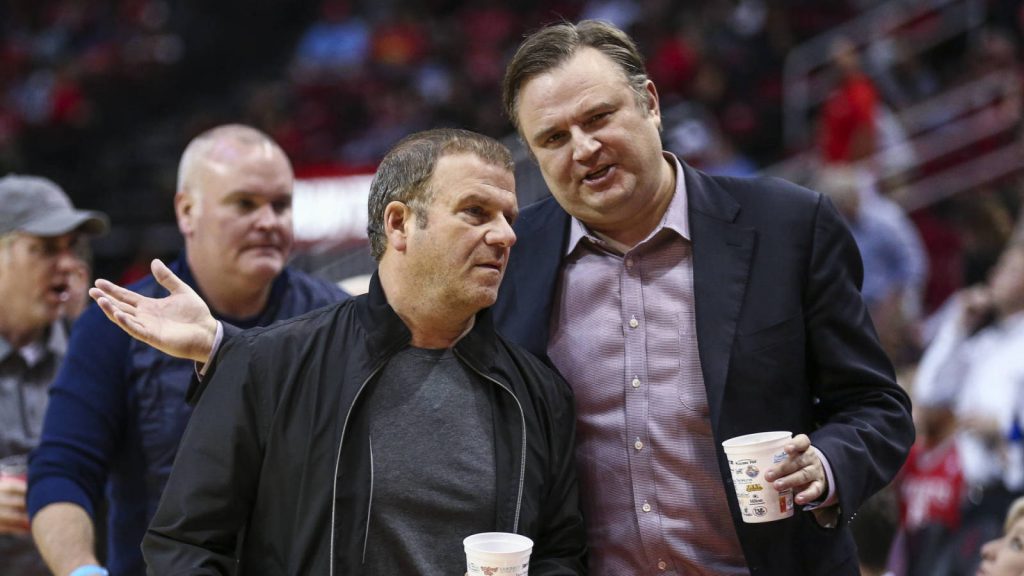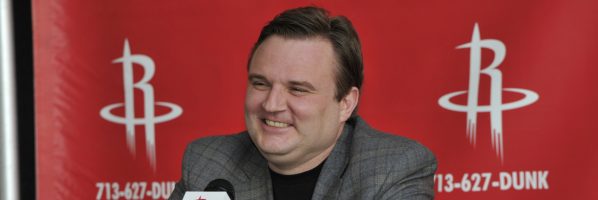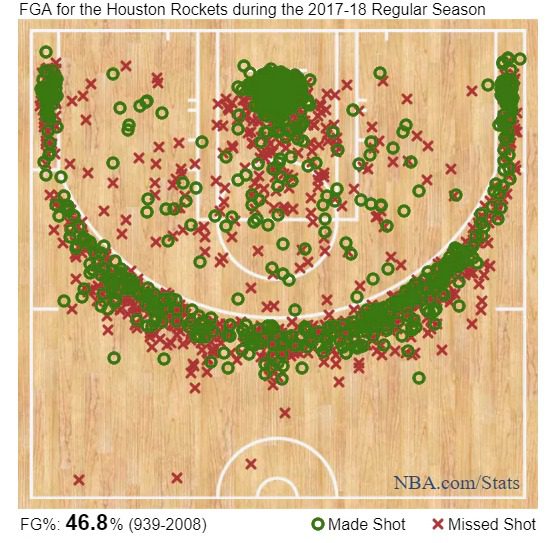The History of the MIT Sloan Sports Analytics Conference

From February 23-24, one of the biggest events in the sports industry and analytics returns for its 12th annual iteration when the MIT Sloan Sports Analytics Conference comes to the Boston Convention and Exhibition Center.
This year, the conference promises to continue to break attendance records, as former President (and everyone’s favorite pickup hoops opponent) Barack Obama is among the scheduled speakers. Joining him will be luminaries of the sports industry such as Maverick Carter and Rob Manfred, and famed egghead and numbers-cruncher Nate Silver will also be along for the ride.
The conference is so large and popular, it is difficult to remember that what Fast Company has ranked as the 3rd Most Innovative Sports Company began as a humble, small-potatoes conference that took place in classrooms on the MIT campus. Let’s look back at the history of the SSAC as its number of attendees grew by more than two thousand percent, and it became a force to be reckoned in an industry given a projected value of $73.5 billion by Forbes.
The MIT Sloan Sports Analytics Conference Early Years
From our January announcement about this year’s event, Matthew Korman writes:
Co-founded by MIT Sloan School of Management MBA graduate Daryl Morey, the current general manager of the Houston Rockets, and Kraft Analytics Group CEO Jessica Gelman in 2006, the annual conference has transformed into one of the most formative sports business events in the world. Since its inception, the event has spawned and popularized numerous movements in the industry, including basketball’s strategic revolution (they call it MoreyBall for a reason).
From its first year in 2007 until 2009, the SSAC took place on MIT’s campus, and while attendance more than doubled during that period, it was still a comparatively low-key affair. Though 2008 brought a keynote speech by Boston Celtics CEO and co-owner Wycliffe Grousbeck, and 2009 saw the beginning of the ‘Featured Panel’ format, the conference was not yet the industry-driving behemoth that it is today.

Houston Rockets owner Tilman Fertitta (left) and general manager Daryl Morey, MIT Sloan grad and co-founder of the MIT Sloan Sports Analytics Conference / Photo via USA Today
Growth Years
In 2010, the SSAC moved to larger digs (at its current home) due to interest and a surplus of programming. The conference’s main attraction was a panel on the limits of statistical analysis moderated by Moneyball author Michael Lewis, as well as the introduction of the research paper track to the conference’s programming. For this aspect, individuals and groups could submit original analysis of statistics-related issues to the organizing committee and vie for a cash prize.
But 2011 was the year that the conference really took aim for the heights of the sports industry: the research paper track was expanded, and a number of soon-to-be immensely popular segments were added to the traditional panel presentation structure. Firstly, Evolution of Sports (EOS) presentations were added, providing a sports industry analog to the ubiquitous TED Talks. In addition, it was the inaugural year for the First Pitch MBA Sports Business Case Competition, in which teams of MBA students from top-ranking programs were presented with a sports business situation and asked to provide a recommendation.
The event continued apace the next year, adding the Trade Show Business Competition, wherein start-ups explain their importance to the sports industry and the most convincing is awarded a cash prize, as well as the Alpha Awards, which recognize those that have altered the field of sports by utilizing analytics to defy conventional wisdom. The next few years of the SSAC saw unprecedented attendance at the conference as it became ever more notorious as a place where the heavy hitters of the sports industry, academia, and statistical analysis come together. The conference has even garnered some nicknames—“The Super Bowl of Analytics” and “Dork-A-Palooza.”
Then And Now
In 2016, conference chair Jessica Gelman noted in her opening remarks that “we had 175 folks at that first conference … this year we have more speakers than we had attendees [at that first conference].” Indeed, the most recent iterations of the SSAC have seen all segments of the conference grow, with an additional broadening of the scope of the conference. For example, in 2017, there were drone races, a live stream that reached an audience of 650,000 people, and a dedicated esports room. 2018 marks the first time that the conference is officially sponsored by ESPN. In final analysis, it seems the only place for the SSAC to go is up.
You can find more details about this year’s event here.
Alumni Spotlight: Daryl Morey and Swapping Intuition for Analytics

In 2006, when Houston Rockets owner Les Alexander announced that MIT Sloan School of Management MBA, analytics expert, and relative NBA unknown Daryl Morey would eventually serve as general manager of the team, the basketball community was surprised, to say the least. A Hoopsworld headline, at the time, read, “Daryl Morey? Are You Serious?”
Though using quantifiable data to make business and strategic decisions across the majority of professional sports has become the norm, in 2006, it was far from standard practice, especially in the world of basketball. At the time, Michael Lewis’s book, Moneyball, was just three years old, and it only highlighted the use of analytics in baseball; perhaps the most straightforward team sport to quantify.
Now, 11 years into his career as a general manager, Morey’s use of analytics to guide NBA decisions ranging from draft picks, to whether a player should go for a three-point shot or a mid-range jumper (hint: take the three point shot) has made him a sports statistics pioneer.
Early Life and Career
While growing up in Medina, Ohio, Morey developed a love of sports. But, according to a profile in Slate, after reading articles written by alleged authorities making predictions for sports teams’ successes that proved way off base, Morey began to question the effectiveness of these experts. Shortly after this realization, Morey happened upon a book by the original sports statistics advocate, Bill James, author of the seminal 1977 book The Bill James Baseball Abstract. James’s data-based philosophy immediately resonated with Morey as the way to mold winning sports teams.
Though he knew early on that he wanted to devote his life to sports, Morey was uncertain of how to gain access to the exclusive business side of the industry. During his time at Northwestern University, Morey sent scads of letters to pro teams, begging for a shot at even the most low-ranking jobs. Each of these letters went unanswered. “So I decided at that point that I had to be rich. If I was rich I could just buy a team and run it,” Morey said.
It was this line of thinking that led the young midwesterner to apply to MIT’s Sloan School of Management. After earning his MBA from MIT in 2000, Morey pursued a career in consulting. Eventually this led to a job working for the Boston Celtics. It was during this time that Morey began applying a statistical model he had developed to size up amateur players to the actual draft. Just a couple of years later, Morey was approached about a managing position for the Houston Rockets, where he has now served as general manager for eleven seasons and has just signed on for an additional four years.
Philosophy and Contributions
At just 21-years old, Morey adapted Bill James’s Pythagorean Expectation, a formula used to predict how many games a team would win, to basketball. “I would have never guessed that you could adapt the Pythagorean to basketball,” James said.
In basketball, Morey is partially credited with normalizing the use of analytics in player acquisitions, as well as approach to the actual game. Under his leadership, the Rockets acquired franchise cornerstone James Harden in what is, in hindsight, already considered one of the more lopsided trades in basketball history. Morey was also instrumental in starting the annual MIT Sloan Sports Analytics Conference, a forum wherein students and professionals can exchange views on the role of analytics in the sports industry.
When asked about his thought processes in Northwestern Magazine, Morey said, “You don’t fool yourself, you take a lot of chances, you cut your losses quickly. That’s all you can do.”
Like the slow-crawl of acceptance sabermetrics toiled through in Major League Baseball, Morey’s analytical imprint on the NBA has routinely drawn the ire of some of the game’s most notable figures, including Hall of Famer, “golfer,” and Inside The NBA host Charles Barkley. In 2015, Barkley routinely chided `the Rockets’ paltry defensive efforts, noting Morey’s tactics of bringing in players seemed fairly basic.
Just two years later, however, and the Rockets are currently riding a 10-game win streak and sit atop of the vaunted Western Conference, with Harden earning potential MVP praise and point guard Chris Paul commanding one of the league’s best offenses. And Morey’s analytical emphasis on three point shooting and pick and roll sets, dubbed “Moreyball,” has never been more prominent. The Rockets lead the league—by far—in three-point attempts per contest, launching a blistering 43.2 per game. For context, the team with the second most three-point attempts per game, the Brooklyn Nets, take 33.8 per game—nearly 22 percent less than Houston.

Stats via NBA.com/Washington Post
The Rockets’ analytical trend may seem extreme, but the rest of the league is still taking notice. The average three point attempts taken per game, nearly a quarter of the way into the 2017-18 season, is the highest ever at 28.7 attempts per game per team; and those figures have gone up every year since 2012. If Moreyball remains a staple of the NBA offense, expect that figure to be broken again in 2019.
Other Pursuits
Morey has a love of musicals, and even proposed to his now-wife Ellen before a production of Grease. It makes sense then that the man the New York Times called a “wizard in the field of quantitative analysis,” has chosen to devote his time to producing a musical. The show, “Small Ball,” is slated to debut in 2018.
